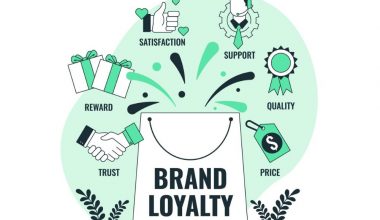As an expert, I can’t stress enough the importance of effective brand communications in today’s competitive business environment. It’s the secret sauce that distinguishes successful brands from the competition, and I’m passionate about it. In this blog article, I’ll go over the basics of brand communications, such as its definition, types, benefits, and strategies, and how I accomplished it with some help from my friends and coworkers.
Key Takeaways
- Brand communications encompass all interactions a brand has with its audience. It is the expression of a brand’s identity, values, and personality through various channels like advertising, social media, and customer service. Effective brand communications create a consistent narrative that resonates with the audience, fostering trust and loyalty.
- Different types of brand communications include advertising, public relations, social media, content marketing, and customer service. Each type plays a unique role in building and maintaining brand identity. For instance, advertising creates awareness, while social media fosters direct engagement with the audience.
- Investing in brand communications leads to increased brand awareness, enhanced customer loyalty, improved brand perception, and a competitive advantage. Consistent and strategic brand messaging helps embed the brand in the audience’s minds, building emotional connections that drive loyalty and repeat business.
- Key strategies include defining your brand identity, creating a brand style guide, leveraging multiple channels, engaging with your audience, and regularly monitoring and adjusting your strategy. These steps ensure a cohesive and effective approach to communicating your brand message.
What is Brand Communications?
Brand communications is the sum of all the ways a brand interacts with its audience. It’s how a brand expresses its identity, values, and personality through various channels, such as advertising, social media, customer service, and more. Think of it as the voice and persona of your brand. Effective brand communications create a consistent and compelling narrative that resonates with your audience, building trust and loyalty over time.
Brand communications serve as a bridge between a firm and its customers in my opinion. When I worked on rebranding a local business, we wanted to create an identity that conveyed warmth, quality, and community spirit. By incorporating these values throughout our communications, from social media posts to in-store signage, we witnessed a huge increase in customer engagement and satisfaction.
Benefits of Effective Brand Communication
Investing in effective brand communications can yield numerous benefits for your business. Here are some key advantages:
Types of Brand Communications
There are several types of brand communications, each serving a unique purpose in building and maintaining brand identity. Understanding these types can help you create a more cohesive and effective brand strategy. Here are the key players:
- Advertising: Think catchy slogans, thought-provoking visuals, and strategic ad placements. Remember that hilarious Snickers commercial where a hangry Betty White turns into a man? Classic brand communication at its finest (and funniest).
- Public Relations (PR): This is all about building positive relationships with the media and influencers. Imagine landing a glowing feature in a top industry publication – that’s the power of PR in action.
- Social Media Marketing: It’s the age of social media, and your brand needs to be one too! Regularly engaging with your audience on platforms like Facebook, Instagram, and Twitter is a must. For me, social media has been a game-changer. By sharing valuable content, responding to comments, and participating in relevant conversations, I’ve built a strong community around my brand.
- Content Marketing: This involves creating informative and engaging content that educates your audience and establishes your brand as an authority in your field. I’ve found that informative blog posts, industry reports, and even eye-catching infographics can be powerful tools for attracting new leads and showcasing my expertise.
- Customer Service Communications: The way you interact with your customers, both positive and negative, speaks volumes about your brand. A friendly and helpful customer service team can turn a frustrated customer into a loyal brand advocate.
Brand Communication Key Elements
Every brand communication plan should have a communication strategy, a target market and audience, and significant benefits or value propositions. Here’s a complete list of the essential components of any great brand communication plan:
#1. Communication Strategy
The overall communication strategy should reflect the investment you’re making in a strategic program. The program should be consistent with the overall marketing and brand goals, identify the specific market you’re attempting to reach, and define targeted success metrics.
#2. Target Audience/Market
Determine which group(s) of potential customers you will target with the strategic brand communication plan. To better understand market share and how to differentiate yourself, you should conduct both qualitative and quantitative research, as well as competitor research.
#3. Key Benefits or Value Propositions
A brand message should focus on how your product or service can assist your consumer reach their objectives and make their life better, easier, and more productive. Take the time to define your core value propositions so that you can effectively promote them across all channels and communications.
#4. Desired Responses
Each brand communication plan should include a desired customer response, such as contacting a sales representative, trying a new product or service, or encouraging or influencing others to engage with the brand.
#5. Media Channels
These are the avenues through which you will deliver your brand’s message. Newspapers, bulletins, social media, content, public relations, and other traditional and digital channels are all options. Determine the channels that make the most sense for your efforts and budget.
How to Start a Brand Communication Plan
A brand communication plan is a road map that will help you communicate your brand’s message effectively. While each organization develops its strategy based on its specific goals and objectives, some important actions are usually included:
- Identify and research your target audience and rivals.
- Establishing your messaging.
- Create a brand identity toolkit and style guide.
- Selecting proper channels and touchpoints.
- Establishing metrics and evaluation
A thorough plan helps brands streamline and organize their communication, allowing stakeholders to convey similar messaging and visuals across all channels.
Brand Communication Plan Example
This brand communications example shows an excellent communication plan that incorporates the goal of growing beyond existing user bases and increasing net-new logos for a company.
Brand Communication Strategy
To effectively promote your brand and fulfill your marketing objectives, you must have a well-defined strategy in place. This section describes five crucial phases for creating a strong and impactful brand communication strategy.
#1. Determine your Brand Communication Objectives
Clear communication objectives are the foundation of a successful strategy. By identifying your precise goals, you can develop a more successful strategy for achieving them.
Start by contemplating your business and marketing objectives, then go into what you intend to achieve. Determine which important areas you want to focus on, such as growing your customer base, launching a new product, or repositioning your brand in the market.
Divide these overarching goals into quantifiable and achievable objectives that are detailed, practical, and time-constrained. For example, if you want to boost brand recognition, you could set a precise objective of increasing your social media followers by 25% over the next six months.
Once you’ve set your goals, make them the driving force behind your plan. Every decision, approach, and channel should be aligned with these goals so that your brand communication efforts are purposeful and cohesive.
#2. Determine your Target Audience and Competitors.
Knowing your target audience allows you to design your brand communication so that it reaches and engages the individuals most likely to be interested in your products or services. When you understand their demographics, preferences, needs, and pain points, you can produce personalized messaging that speaks to them on a deep level.
Furthermore, researching your competitors provides essential knowledge about the competitive landscape, allowing you to understand what distinguishes your brand and how you can stand out.
Create buyer personas to better understand your target customer. Personas are fictitious representations of your ideal clients developed through market research and data analysis. When creating these extensive profiles, consider demographics, behavioral trends, and motivations.
Conduct a competitor study to identify your competitors, including their brand positioning, messaging strategies, target audience, and unique selling propositions. Examine their web presence, social media activity, customer feedback, and advertising initiatives.
Incorporate these insights into your brand communication plan to ensure that every aspect of your strategy is influenced by a thorough understanding of your target audience and rivals.
#3. Develop your Core Messaging
Your core messaging contains your brand’s identity, values, and distinctive offerings, defining what distinguishes you from the competition. Clear and well-crafted messages promote consistency over all touchpoints, such as advertising, social media, website content, and customer interactions.
To create your core messaging, determine your unique selling proposition (USP) and use it as a guiding principle. Determine what distinguishes your brand – what unique benefit or value do you provide customers?
You can also tell the story of your brand, including its origins, values, and mission. A well-crafted story promotes emotional ties and trust, so explain why your firm was founded and how it intends to make a difference in customers’ lives.
Use clear, straightforward language and avoid jargon and sophisticated terms. Instead, focus on vocabulary that is relevant to your target audience and easy to grasp.
#4. Adapt to Different Channels, Audiences, and Situations
Each channel has distinct qualities and audience demographics. It is critical to adjust your messaging and communication to each platform to ensure that your communications are well-received, engaging, and consistent with your target audience’s expectations and preferences.
Conduct detailed research on audience disparities across mediums. Understanding each target segment’s demographics, interests, and habits enables you to tailor content accordingly. For example, Facebook’s greatest age group is 25-34, whereas Instagram’s is 18-24.
The same concept applies to the distinct tones or voices for each channel. For example, a more informal and conversational tone may work well on platforms such as TikTok, yet a more professional and informed tone may be appropriate for engaging audiences on LinkedIn.
#5. Double Down on What Works and Refine what doesn’t
This is a key element in a brand communication strategy since it enables continual improvement and keeps you ahead of the competition. By constantly updating your strategy, you can better satisfy the changing demands and preferences of your target audience.
Implement a strong measuring and analysis system to enable effective evaluation and adaptation. Analyzing key indicators provides useful information about the effectiveness of brand communication initiatives. Consider measuring some of the following metrics:
Engagement, clicks, and reach on social platforms Clicks, bounce rates, unique visitors, and form-fills on your websites and blogs Open and click rates for email blasts Return on ad spend (ROAS), clicks, impressions, and conversions for paid ads
A/B testing can also help you measure the effectiveness of your messaging. It enables you to determine which versions perform better, allowing you to improve your communication strategy. You can conduct A/B tests on landing pages, social postings, email newsletters, and blog content.
Collecting and reviewing client feedback, as well as monitoring online reviews, can provide significant qualitative insights to help you enhance your brand communication.
Download this Brand Communication Plan Template today and start building a strong brand voice that resonates with your audience!
Brand Communication Examples to Inspire Your Strategy
If you recognize a brand solely by hearing a phrase or looking at an image, it is probably part of a bigger communication strategy. Here are two examples.
#1. American Express
If you grew up watching television in the ’80s and ’90s, you can recall the iconic American Express tagline, “Don’t leave home without it.” AmEx has changed its motto to “Don’t Live Life Without It,” but the attitude remains the same: your AmEx card is a requirement.
AmEx’s brand communication strategy relies heavily on consistency and cohesiveness. The consistent use of taglines throughout several advertising media, including television advertisements and its homepage, has resulted in a united voice and message. By consistently promoting the perception that an American Express card is a requirement, the brand has successfully established itself as an indispensable companion in the lives of its customers.
#2. Duolingo
Duolingo has successfully captured language learners all over the world by using the power of a distinct and fun voice. The brand’s mission to make language learning pleasurable and accessible is strongly embedded in its communication strategy, resulting in a highly visible and engaging brand presence.
Duolingo’s brand voice is well aligned with its key beliefs, as stated in its brand narrative: “We believe that learning a language should be enjoyable and fearless.” This unique approach distinguishes Duolingo from standard language-learning techniques by efficiently breaking down challenges and instilling a sense of excitement and enthusiasm in its users.
Tips Used in Mastering My Brand Communications and How You Can Too!
Look, I’ll be honest – mastering brand communications wasn’t an overnight success story. There were (and still are!) plenty of stumbles along the way. But through trial and error, research, and a whole lot of learning from my mistakes, I’ve developed a brand communication strategy that’s working for me.
Here are some major lessons from my personal experience:
- Focus on Value, Not Just Sales: People get flooded with marketing messages every day. The key to piercing through the noise is to offer true value. Provide useful advice, give industry insights, and educate your target audience. When you focus on value, sales will come effortlessly.
- Be Genuine: People can detect insincerity from a mile away. So, be true to your brand’s voice and values. Don’t strive to be someone you aren’t. Your audience will appreciate how genuine you are.
- Be Patient: Creating a successful brand requires time and work. Don’t be discouraged if you fail to see results immediately. Continue to create excellent content, interact with your audience, and refine your plan. The rewards will be worthwhile!
Is brand communications the same as public relations?
Brand communications and public relations (PR) are closely related but not exactly the same. Think of brand communications as a big umbrella. Public relations (PR) is a specific tool you can use under that umbrella.
Conclusion
Any successful marketing plan relies on effective brand communications. Understanding its definition, types, benefits, and strategies can help you establish a strong network of brand champions. So, I ask you: what is your brand’s story, and how will you share it with the world?
Related Articles
- 7 Strategies for Utilizing Brand Influencer Opportunities in 2024
- Customer Marketing: 8 Killer Customer Marketing Strategies for Building Your Brand
- PERSONAL BRAND ATTRIBUTES: What They Are, How to Define Yours and Enhance Them
- 10 Communication Best Practices You Should Know to Improve Employee Engagement
- Community Relations: Best Strategies for Your Business
- Integrated Communication in the Digital Age






